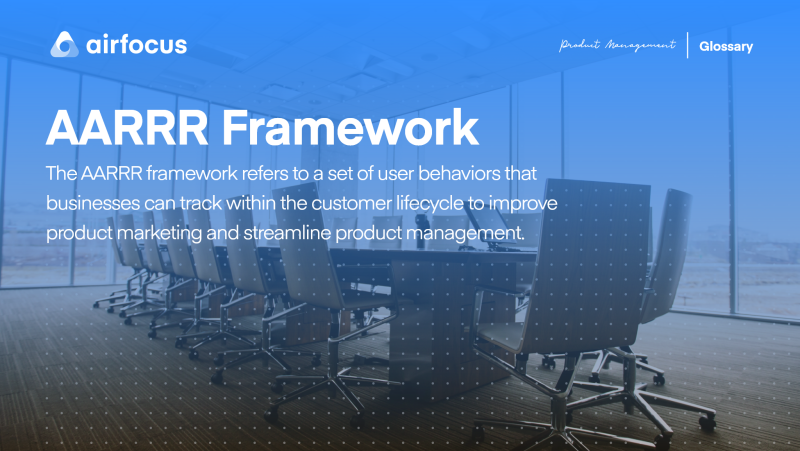AARRR Framework
What is the AARRR framework?
Definition of the AARRR framework
The AARRR framework refers to a set of user behaviors that businesses can track within the customer lifecycle to improve product marketing and streamline product management.
AARRR is an acronym representing five key categories of metrics, developed to help start-ups grow their business in a fast, but sustainable, way.
“AARRR” stands for:
Acquisition: Through which channels are customers initially finding your product or service?
Activation: Which actions are prospects taking when engaging with your business?
Retention: Are you losing any customers? How can you ensure they stick around?
Referral: Are there ways you could encourage existing customers to evangelize your brand?
Revenue: Is your business bringing in any money? How can you boost your bottom line?
Examples of AARRR metrics
At the heart of this framework is those five key metric categories. Each one is designed to focus a business on specific goals and milestones required to grow and scale sustainably. Unlike similar frameworks, however, AARRR metrics are not set in stone.
To help you better understand which types of metrics fall into each category, here are some real-world examples:
Acquisition
Paid search
SEO / organic search
Content marketing
Word of mouth
Social media
Activation
Submitting a contact form
Requesting a callback
Signing up for a service / making a purchase
Subscribing to an email newsletter
Retention
Repeat visits to your website or use of your product
Opening / responding to your emails
Re-purchasing your product or service
Referral
Signing up for and participating in referral programs
Recommending friends or colleagues via word of mouth
Use of social media sharing to promote your brand and create brand recognition
Revenue
Achieving a set minimum revenue per customer
Reaching break-even point for total revenue
Exceeding the cost of customer acquisition
Don’t forget: these are just some examples of metrics you could track as part of using the AARRR framework in your business.
As you begin to keep track of these metrics, you’ll probably find that other opportunities appear organically — and that’s part of the value that using such a framework creates.
How is the AARRR framework used?
The AARRR framework is less about the step-by-step process and more about specific definitions, e.g. which of the above metrics you choose to measure in your business. But to cover every base, here’s how the framework would be used in a business setting:
First, you would identify your AARRR metrics most meaningful to you.
Next, you’d set up the tools and processes needed to track these particular metrics.
Once you have some hard numbers, you would use the results to make tweaks and set up A/B tests to ensure you’re optimizing for the best results — perhaps your acquisition rates are high, but retention rates are low. What do you need to do to fix this?
With a refined set of AARRR metrics, you can start to turn analytics into action within your business.
Who created the AARRR framework?
The AARRR framework was first developed by Dave McClure as part of a talk he gave at Supernova in 2007. Dave is an entrepreneur and investor who founded the business accelerator 500 Startups.
Dave described the framework as a simple tool, designed to empower businesses to develop a model of customer behavior, then to improve marketing and development efforts.
One quick side note: you may have heard this framework referred to as “pirate metrics”.
Why?
Well… try saying “AARRR” aloud and that should answer your question. (But maybe wait until you’re alone… just in case).

General FAQ

Glossary categories
Experience the new way of doing product management

Experience the new way of doing product management







